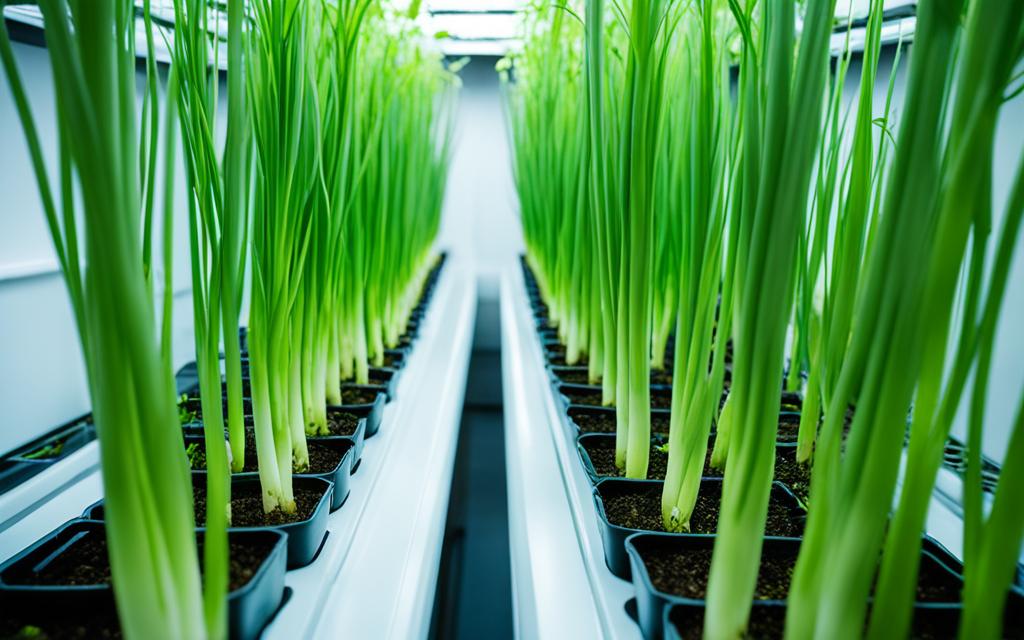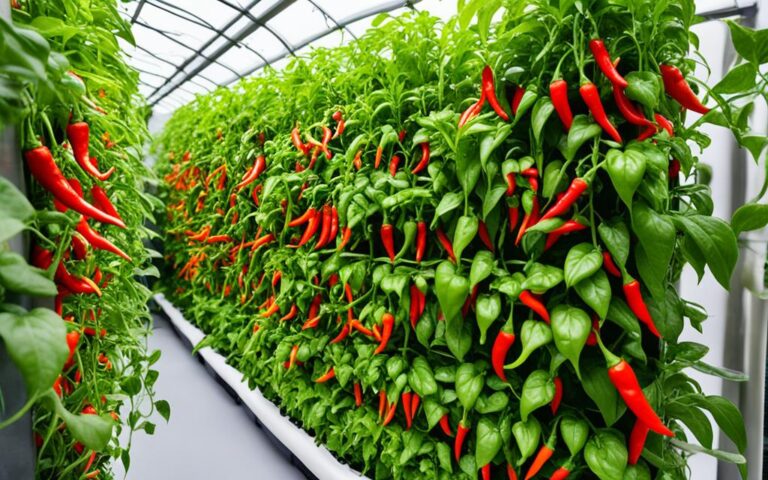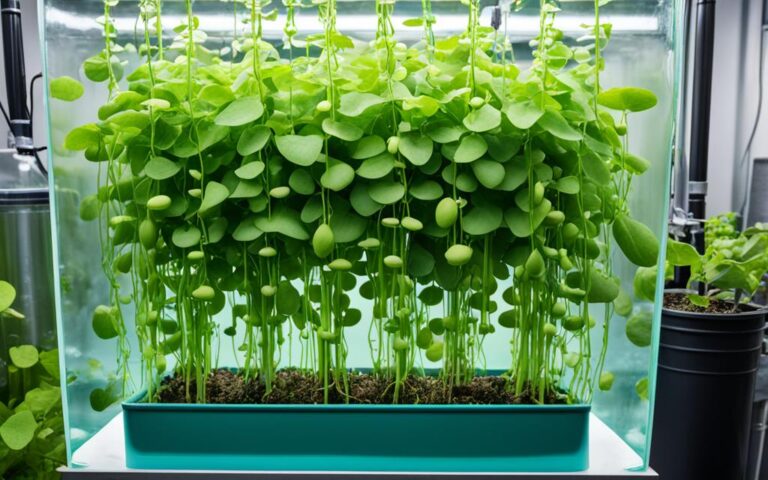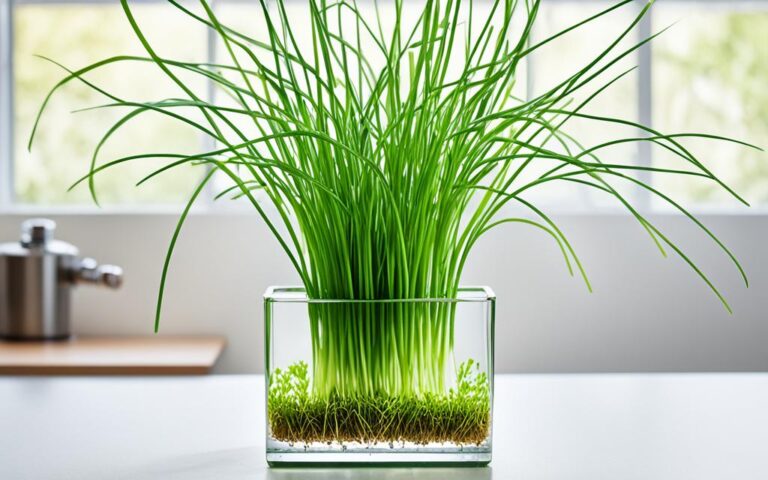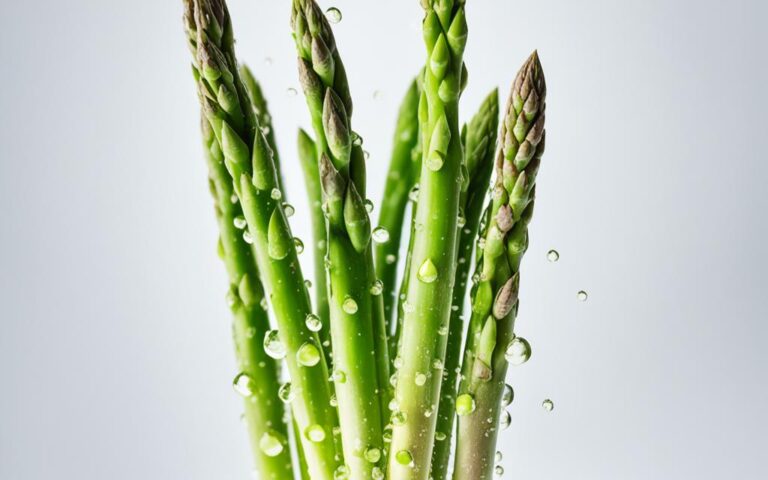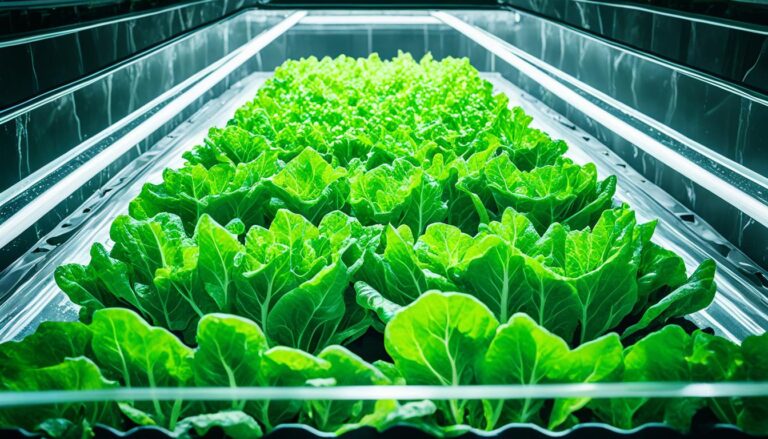Grow Hydroponic Leeks: Tips for Lush Greens
Did you know hydroponic leeks can produce up to 50% more than those grown in soil? This method lets you grow a lot of tasty leeks all year, no matter the weather or space you have.
Hydroponics is a new way to grow plants without soil. It changes how we grow hydroponic leeks. By controlling nutrients, water, and the environment, you can make your leeks grow better, taste better, and avoid common problems. This guide is for anyone, whether you’re new to growing leeks hydroponically or already love it. It gives you the key tips and techniques to make the most of hydroponic leeks.
Key Takeaways
- Hydroponic leeks can yield up to 50% more than soil-grown leeks.
- Hydroponics allows for precise control over growing conditions, leading to faster growth and healthier plants.
- Hydroponic leeks nutrients, hydroponic leeks pH, and the best hydroponic system for leeks are crucial for success.
- Year-round production and increased water efficiency are key benefits of growing hydroponic leeks.
- Mastering hydroponic leeks fertilizer and nutrient management is essential for maximizing yield and quality.
Introduction to Hydroponic Leeks
Leeks are a tasty and versatile vegetable, part of the allium family. They are related to onions, garlic, and chives. These veggies have long, cylindrical shapes with flat, green leaves that grow above the soil. They have a mild taste.
Leeks come from central Asia and have been grown for thousands of years. People in ancient Egypt and Greece used them a long time ago.
What are Leeks?
Leeks are a special vegetable with a unique flavor. They taste milder than onions and garlic. Their long white stems and green leaves make them look nice and add nutrition to dishes.
History and Uses of Leeks
In the past, leeks were loved for their taste and health benefits. The Egyptians, Greeks, and Romans ate them. Now, leeks are in soups, stews, roasts, and as a garnish. They are also great for growing indoors because they grow long and adapt well.
| Nutritional Highlights of Leeks | Culinary Uses of Leeks |
|---|---|
|
|
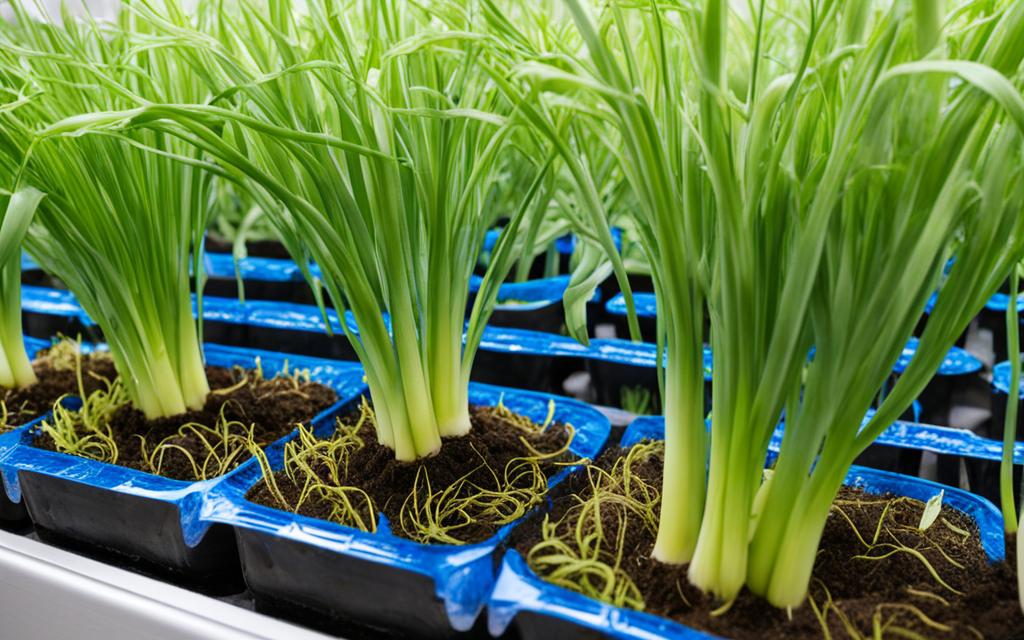
Leeks are a key ingredient in many kitchens. They add flavor and versatility to dishes. These amazing alliums inspire cooks with their unique taste.
Varieties of Hydroponic Leeks
When growing hydroponic leeks, gardeners have many choices. Each variety has its own unique traits and maturity times. Knowing the differences between early and late leek varieties can boost your hydroponic harvest.
Early Season Leeks
Early season leek varieties like King Richard and Hannibal mature in about 75 days. They have slender stalks and a mild taste. These are perfect for extending the growing season and offering fresh greens.
Late Season Leeks
Late season leeks such as Carentan and Giant Musselburgh take 105-130 days to grow fully. They produce bigger, more flavorful stalks. These are great for winter harvests and add a rich taste to cold-weather dishes.
Using both early and late season leek varieties in your hydroponic setup gives you a longer harvest period. You’ll get a variety of flavors and textures for any dish.
Setting Up a Hydroponic System for Leeks
To grow healthy leeks, you need a hydroponic system that gives them the best conditions. Deep water culture (DWC), nutrient film technique (NFT), and ebb and flow systems are great options. These systems control the nutrients, water, and oxygen. This is key for strong roots and healthy plants.
Choosing the right growing medium is important for a hydroponic system for leeks. Expanded clay or coco coir work well because they keep water and air in the roots. Where you put the plants in the setup also matters for success with the leeks hydroponic setup.
| Hydroponic System | Key Features | Suitability for Leeks |
|---|---|---|
| Deep Water Culture (DWC) | Roots suspended in nutrient-rich water, continuous aeration | Excellent for leeks, providing a steady supply of nutrients and oxygen |
| Nutrient Film Technique (NFT) | Shallow film of nutrient solution continuously flowing over roots | Ideal for leeks, ensuring consistent moisture and nutrient availability |
| Ebb and Flow | Periodic flooding and draining of the growing tray, allowing roots to absorb nutrients | Suitable for leeks, as the cyclic watering promotes robust root development |
Picking the right hydroponic system and setting up the conditions well can make your hydroponic system for leeks work great. You’ll get lots of tasty, healthy leeks in a controlled space.
Planting Hydroponic Leeks
Hydroponic leeks can be grown from seed or by transplanting seedlings. Each method has its own benefits, letting gardeners choose what works best for them.
Starting from Seeds
Growing hydroponic leeks from seed gives you control over the soil and nutrients. Plant the seeds about 1/4 inch deep and keep the soil moist until they sprout. After the seedlings grow, thin them to give each plant enough space.
Transplanting Techniques
Transplanting seedlings can help hydroponic leeks get a jumpstart. Carefully separate the roots of young leek plants and put them in the hydroponic medium. Make sure the leaves stay above the surface. Using the right transplanting methods, like making holes for the plants and covering the stems, helps them adapt well to the hydroponic setup.
| Method | Advantages | Considerations |
|---|---|---|
| Seed Starting |
|
|
| Transplanting |
|
|
The choice between starting with seeds or transplanting seedlings depends on the gardener’s needs and preferences. Knowing the benefits and things to consider for each method helps growers make the best choice for their plants.
Caring for Hydroponic Leeks
For your hydroponic leeks to stay healthy and productive, it’s key to keep the growing conditions just right. They need specific light and temperature settings to thrive. Let’s dive into these needs.
Light and Temperature Needs
Leeks love sunlight and need at least 6 hours of direct sun each day. If you’re growing them indoors, use energy-saving LED or fluorescent lights. These lights give the right amount of light and color for healthy growth.
The best temperature for hydroponic leeks is between 60°F and 70°F. They can handle a bit of warmth or coolness. It’s also crucial to keep the soil moist, ensure good air flow, and protect them from frost or extreme heat.
| Light Requirements | Temperature Needs |
|---|---|
| Partial to full sun, at least 6 hours of direct sunlight per day | Ideal range: 60°F to 70°F, can tolerate slightly warmer or cooler conditions |
Knowing what leeks light requirements and leeks temperature needs are helps you create the best environment. This leads to healthy plants and a big harvest.
Nutrient Management for Hydroponic Leeks
To grow healthy hydroponic leeks, you need a balanced nutrient solution. Leeks need nutrients like nitrogen, phosphorus, potassium, calcium, magnesium, and micronutrients. You can use pre-made mixes or make your own, keeping an eye on the pH, EC, and TDS levels.
Essential Nutrients for Hydroponic Leeks
- Nitrogen – Helps with leaf growth and plant health.
- Phosphorus – Helps roots grow and makes energy.
- Potassium – Makes plants stronger against diseases and stress.
- Calcium – Makes cell walls strong and plant structure better.
- Magnesium – Important for making chlorophyll and photosynthesis.
- Micronutrients like iron, boron, and zinc – Help with many body processes.
Preparing Hydroponic Nutrient Solutions
When making your own nutrient solution, balance is key. Check and adjust the levels of each nutrient to help leeks grow well. Testing the solution’s pH, EC, and TDS is important for healthy plants and good yields. By managing nutrients well, you can make your hydroponic leeks grow big and full of nutrients.
“Properly managing the nutrient solution is the key to growing robust, high-yielding hydroponic leeks.”
Growing Hydroponic Leeks in Different Systems
Hydroponic leeks can grow well in many systems, each with its own benefits. Let’s look at some top choices for growing these tasty veggies hydroponically.
The deep water culture (DWC) system is a great pick. It keeps the leek roots in a nutrient-rich solution. This ensures they get water and nutrients consistently. The system also provides oxygen, helping the roots and plants grow strong.
The nutrient film technique (NFT) is another good option. It uses a shallow, flowing solution to feed the leeks’ roots. This setup closely matches the natural conditions leeks love.
- Ebb and flow (flood and drain) systems work well for hydroponic leeks too. They flood the growing medium at times, like the moist soil leeks prefer. This flooding and draining helps roots grow and absorb nutrients well.
Growers can try out various hydroponic leeks growing systems to see what works best for them. Knowing the strengths of each system helps create the best environment for your leeks in DWC, leeks in NFT, or leeks in ebb and flow setups.
“The key to successful hydroponic leek cultivation is understanding the specific needs of the plant and designing a system that closely mimics its natural growing environment.”
hydroponic Leeks Pests and Diseases
Hydroponic systems can help reduce pests and diseases, but hydroponic leeks still face challenges. Keeping a close eye on your plants is key to a healthy crop.
The leek moth is a big problem, eating away at leaves and stems. Thrips and onion maggots also target hydroponic leeks, causing damage and slowing growth.
Diseases like leek rust, downy mildew, and botrytis leaf blight can hit hydroponic leeks hard. These diseases show up as discoloration, wilting, and can really hurt plant health and production.
To keep pests and diseases away from hydroponic leeks, growers should:
- Keep growing conditions right, like temperature, humidity, and air flow.
- Use physical barriers, like row covers or insect netting, to keep pests out.
- Try organic or biological controls, such as beneficial insects or natural fungicides, for pests and diseases.
- Check your hydroponic leeks often for problems and act fast to fix them.
By being watchful and using good leeks pest management and disease control methods, hydroponic growers can grow healthy hydroponic leeks and increase their yields.
| Pest/Disease | Symptoms | Management Strategies |
|---|---|---|
| Leek Moth | Larvae burrowing into leaves and stems, causing stunted growth | Use row covers, introduce natural predators, apply organic insecticides |
| Thrips | Discoloration, wilting, and reduced plant vigor | Maintain optimal humidity levels, use insecticidal soaps or neem oil |
| Onion Maggot | Tunneling in the stems, leading to plant collapse | Use physical barriers, apply beneficial nematodes, rotate crops |
| Leek Rust | Orange, powdery pustules on leaves and stems | Improve air circulation, apply organic fungicides, remove infected plants |
| Downy Mildew | Yellowing and wilting of leaves, fuzzy white growth on the undersides | Maintain proper humidity levels, use disease-resistant varieties, apply biopesticides |
| Botrytis Leaf Blight | Gray, fuzzy fungal growth on leaves and stems, leading to plant decay | Optimize growing conditions, remove affected foliage, use biological fungicides |
Harvesting Hydroponic Leeks
Timing is crucial when harvesting hydroponic leeks. These veggies are ready when they reach 8 to 12 inches long. The maturity timeline for hydroponic leeks varies by type and growing conditions. But most leeks are ready in 80 to 130 days after planting.
To get your hydroponic leeks, pull the plant from the medium by the base. Don’t cut the leaves to avoid disease and extend the plant’s life. Using the right harvesting techniques lets you get several harvests from your leeks.
“Timing is everything when it comes to harvesting hydroponic leeks for the best flavor and quality.”
Whether you’re new or experienced in hydroponic gardening, learning to harvest your hydroponic leeks is key. By following these tips and watching your leeks grow, you can enjoy these tasty greens in your cooking.
Troubleshooting Common Issues
Growing hydroponic leeks can be rewarding, but it’s not always smooth sailing. Growers might face challenges like nutrient deficiencies. These can show up as stunted growth, leaves that look off-color, or signs of stress. By keeping an eye on the nutrient solution and making changes when needed, growers can keep their hydroponic leeks healthy.
Identifying and Addressing Nutrient Deficiencies
Nutrient problems in hydroponic leeks can come from many places. These include the nutrient solution itself, the environment, or the leek’s genetics. To fix these issues, growers should test the nutrient solution often and watch their plants for trouble signs. Look out for:
- Stunted growth or reduced plant height
- Yellowing or discolored leaves
- Wilting or drooping foliage
- Reduced overall plant vigor
After finding a deficiency, growers can fix it by adjusting the nutrient solution’s pH, adding missing nutrients, or changing the environment. By being alert and fixing leeks nutrient deficiencies quickly, growers can keep their hydroponic leeks healthy and productive.
While nutrient issues are common, growers should also watch out for pests, diseases, and environmental factors. These can hurt the growth and yield of their hydroponic leeks. By staying informed and acting fast, growers can solve problems with hydroponic leeks and make their growing operation a success.
Tips for Maximizing Hydroponic Leeks Yield
To get the most from hydroponic leeks, you need a good plan. Make sure the plants have the right amount of light, temperature, and nutrients. This helps them grow strong and healthy.
Choosing the right type of leek can also help a lot. These plants are made to do well in hydroponics, giving you more growth and yield. Also, how you space the plants is important. It helps use space well and lets each plant get what it needs.
- Maintain optimal lighting, temperature, and nutrient levels
- Choose high-yielding leek cultivars designed for hydroponic systems
- Ensure adequate plant spacing to maximize resource utilization
Try using techniques like planting at different times or picking leeks at staggered intervals. This way, you can keep harvesting leeks for longer and get more from your system.
Also, keep an eye on your plants for pests and diseases. Regular checks and quick action can stop problems before they get worse. This lets your leeks grow well and produce more.
“Maximizing the yield of hydroponic leeks requires a multifaceted approach that takes into account every aspect of the cultivation process.”
By following these tips, hydroponic growers can make the most of their leek crops. They can look forward to a great harvest every season.
Conclusion
Growing hydroponic leeks has many benefits. It lets you produce food all year, uses less water, and gives plants the right nutrients for strong growth and more food. By picking the best hydroponic setup and plants, and keeping the right growing conditions, anyone can grow these tasty alliums.
This article has given tips and strategies for hydroponic leek growers. These plants can be used in many dishes, like soups, salads, and side dishes. We’ve talked about how to grow hydroponic leeks, their benefits, and why they’re great for hydroponic gardens.
By growing hydroponic leeks, growers can enjoy nutritious and tasty greens all year. This meets the growing need for local, eco-friendly food. With the right knowledge and effort, hydroponic leek fans can have a successful crop. This improves their cooking and helps the planet.
